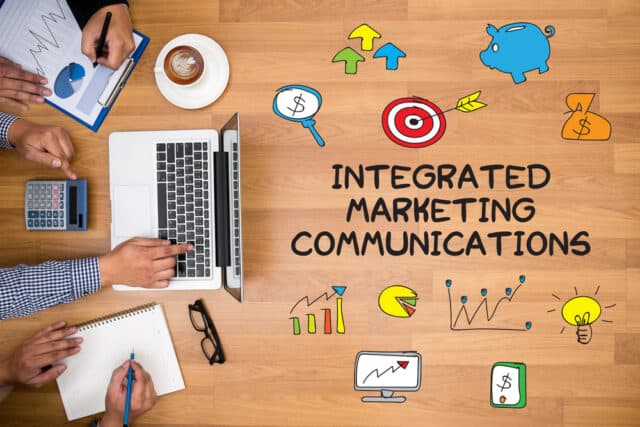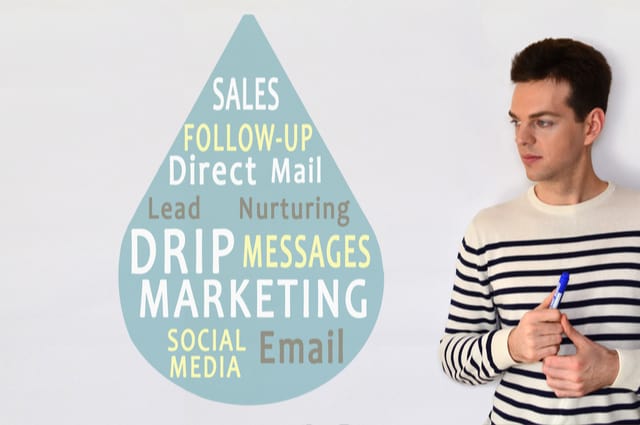How an integrated marketing communication plan can be useful to boost your business?

An integrated marketing communication plan will help to communicate information efficiently to the right stakeholders. It will help in identifying the messages that you will share.
This strategy will help you plan how, when, and to whom they will be sent. In times of crisis, planning communications is valuable. They can be helpful in selling new products or presenting new ideas.
How do you create a communication strategy?
Now that we have covered the benefits of a communication strategy, let’s see how to create one. Although it can be challenging to develop an effective communication plan, it will pay off in the long term.
1. Review your marketing materials
Before you can start to work on your strategy, it is essential to determine where it fits within your company. It is vital to conduct a “state-of-the-union” audit or assess your company’s current communications environment. This will allow you to identify potential problems.
For product launches, a communication strategy must be devised. You’ll have to conduct audits to discover any gaps in your marketing approach.
You may find that your marketing materials are lacking in certain areas. Your marketing materials may not often cover a topic relevant to your product, which should be included in your messaging strategy.
You will need to gather and evaluate data about the effectiveness of your current marketing plan in order to conduct an audit. You’ll have to develop strategies for major findings. To identify gaps in your communications materials, you may conduct surveys with your target audience. When performing an audit, keep the goal of your communications strategy in mind.
2. Based on your audit results, set specific goals for your communication strategy
You’ll want to set some objectives depending on the info you’ve collected. What are your objectives for this strategy? Recall the term SMART: Specific, Measurable, Attainable, Relevant, and Time-based if you’re uncertain.
3. Decide to whom your communication strategy will be sent
Listening and understanding your listener is the key to effective communication. If an emergency communication strategy is for stakeholders, which stakeholder(s) are you communicating for in this scenario? Stakeholders include employees, customers, investors, local government officials, and media outlets.
You can reach your goals by writing a press release that features your goals. You should have a plan for who will speak to the media and an outline of their comments. Next, create a plan for moving forward. If your target audience is your workers, you might create a domestic document with contact information for the internal DRI.
4. Once you have your target audience in mind, make a plan and create an outline
Once you have created your strategy, you can start to make a chart or a table to help you identify the messages that you want to promote, the people to whom they are directed, and the media to use. It is a good idea for stakeholders to collaborate on creating your communication plan. This will increase reliability.
Strategies should address both the potential dangers as well as the goals. Marketing agencies that are trying to promote the products of clients could run into problems if they spend money on advertising without a return.
5. Select the channel through which you will send your communications
Your message and the people you want to reach will determine which channels you choose to communicate with them. For example, suppose you create a communication strategy for your internal staff. In that case, you can send it via email to the entire company or hold in-person meetings with your team members. To interact with customers, you can send an email newsletter or publish a press release. Your objectives will determine which channel you choose, but it is essential to consider your distribution methods when you create your communication strategy.
6. Determine who will deliver the message on behalf of your team
Once you have identified your audience and chosen the channel to communicate your message, you can select the DRI that best conveys the message.
7. Estimate how long each step will take
It is essential to have an idea of the time it will take for each stage of your plan to be implemented. It is crucial to estimate how long it will take for your strategy to be communicated to higher-ups and employees. It is also helpful to calculate the duration of a media cycle. An example: If an ad campaign has a minor error, the agency might estimate that it will take 10 days to fix the problem. This includes meetings with clients, stakeholders, and staff to determine the next steps.
8. Present your plan to stakeholders. Assess the results and identify areas for improvement
It is never too late to improve. After you have presented the strategy to stakeholders, assess the results and determine what worked and what could be improved. The ad agency’s quarter-long aim of raising the number of applicants by 30% may not have been accomplished.
They may need to revise their objectives or shift their quarterly focus in order to meet those goals. If you find that some terminology in your communications strategy is causing anxiety or stress among your internal stakeholders, you might consider changing the way you word your communications plan to make it more helpful, beneficial, and positive. Are you interested in ways to improve your integrated market communication (IMC)? Continue reading if you responded yes to these questions.
Integrated Marketing Communications Plan (IMC)

A way to combine multiple marketing activities in a single campaign is called Integrated Marketing Communications. Marketers can reach their target audience with consistent messaging across multiple channels using this approach. The firm might promote its new product via radio, television, and social media. This shows how different communication channels can be combined for great results. The most effective strategy to boost brand affinity and market dominance is to use integrated marketing communications. Successful marketing communication strategies must consider both customer journeys and consumer behavior.
Customers will receive consistent messages at every touchpoint with the IMC plan. It’s critical to consider the full client journey, from start to finish. Multiple components can be combined to make a marketing communications plan. This will increase efficiency and meet customer requirements. The IMC Plan covers Market Research, Strategic Planning, and Audience Segmentation. This includes campaign messaging, budgeting, and ROI analysis.
What is Integrated Marketing?
A method of communicating messages across all platforms is known as integrated marketing. This strategy allows you to communicate consistently with your target audience. It does not matter what medium they use to interact with your brand. It may be online, offline, or through social media. Marketing channels can be complicated and require planning. It can be a worthwhile investment to integrate marketing campaigns. Integrated marketing combines modern and traditional marketing efforts. It facilitates the development of the most effective plan.
This joint effort involves several departments within the company. The common goal is to meet customer needs and make the product more appealing to potential buyers. Integrated marketing is a long-term strategy for building profitable client relationships. This includes traditional advertising and other communication techniques that promote a firm’s reputation. Integrated marketing can boost brand recognition, market dominance, and income because of these synergies. Integrated marketing might seem like another form of marketing and advertising. However, it is more than just having multiple campaigns running at the same time.
Integrated Marketing Strategies – Developing an IMC Plan
It takes a lot of work to develop an integrated marketing strategy. However, it is worth it. The company’s communications plans and sales funnels are better. Integrated marketing communications help companies create better customer experiences. To ensure that customers get the same message across all channels, the company’s marketing team must work with other departments. This will help them to be more loyal and achieve their marketing goals.

What are the advantages of a marketing communication strategy that is integrated?
Implementing an IMC plan has many benefits. These are just a handful of the numerous advantages of an IMC plan.
1. Increase brand awareness
A company may use its marketing communication strategy to promote its products, increase its perceived value and increase sales. Integrated marketing communications can build lasting relationships with customers through its many activities, strategic approach, and numerous activities. It can increase brand recognition and foster customer loyalty.
2. Higher conversion rates
Marketing professionals who combine their communications with prospects have higher conversion rates. Prospects are more likely than others to respond positively to messages. This aids in generating interest and the acquisition of market share. They can handle the risks and expenses of rapid technological development and low-growth economies.
3. Improved customer experience
The marketing communications strategy should consider all possible interactions between your company and potential customers. Let’s say your advertising does not produce quantitative or immediate results. Your overall organizational goals and objectives will be supported by your marketing communications activities. This improves the customer experience.
4. Lower costs
A marketing communication strategy that integrates multiple marketing strategies can help you save money. This can help you reduce waste and keep your company organized.
5. More efficient operations
Marketing and sales interaction are vital to improving operations. It’s challenging to create a solid, integrated plan for sales and marketing without constant communication and understanding.
6. More control over customer experience
The IMC helps companies define their goals and improve customer service. It can also remind clients of their marketing goals and help them measure client reactions. The IMC can help a company run a successful marketing campaign.
7. Improved customer loyalty
Marketing communication strategies are vital as they help to increase customer loyalty. This ensures customers have a memorable and unique buying experience throughout the entire retail process. It targets different market segments at various points in the buying cycle and responds to their needs by motivating them on different emotional levels.
8. Employee satisfaction is higher
A comprehensive marketing communication plan that focuses on senior management and seeks feedback from all employees will improve the brand’s reputation. This will increase visibility and exposure to their messages and strengthen employee engagement over the long term. It helps staff set realistic expectations and improve morale.
9. Lower attrition rates
A well-designed and implemented integrated marketing communication plan will increase brand awareness, customer satisfaction, and positive publicity. This will result in a decrease in attrition rates.
10. Investing in higher returns
Marketing campaigns that are integrated (IMC)-based have been proven to increase market share and improve returns on investment. A marketing communication plan integrates the resources of the marketing department. In this way, companies can maximize their returns on investment.
11. Improved reputation

A company’s reputation can be one of its most valuable assets. Poorly planned campaigns can lead to a tarnished reputation and lower business value. Proven professionals know that consistent brand messaging across platforms can lead to a better reputation.
A well-thought-out marketing communications strategy is essential to increase customer loyalty and brand awareness. This will allow you to stay on track with your branding goals. It is essential to determine the media mix that will give your products and services the most excellent visibility on the market.
12. Sales increase
Product promotion is an important aspect of web marketing. Email newsletters and promotional emails are excellent methods of promoting your items. Sales are significant, but a strong marketing strategy can also help build brand equity.
Marketing mistakes include thinking of media, content, and promotions as separate entities. For example, you may have multiple landing pages for PR media because each page has a different offer. Many businesses fail to link their media, content, and promotions. They fail to see what really matters, which is increasing sales.
13. More trust with suppliers and partners
It is essential to build and maintain solid relationships for your business to succeed. To ensure that suppliers and partners are in constant communication, it is essential to keep a consistent branding message. Your marketing strategy should include a solid social media component.
14. Higher market penetration
A well-thought-out integrated marketing communication plan tied to company goals is key to effectively engaging customers. A comprehensive marketing communication plan can increase the penetration of your product or service market. To increase market penetration, many factors need to be combined.
15. Improved customer service
Did you know that customer service can make your company more profitable? Every organization can do it. If you offer exceptional customer service, there is a high chance of building long-term, lucrative relationships with clients.
Integrated marketing communications are incomplete without customer service. Public relations and promotional activities can be combined to improve and achieve customer service. To implement a comprehensive marketing communications plan, strategic planning is necessary.
16. A stronger competitive advantage
To succeed, you must stand out from your competition. Increase your competitive edge. Your marketing strategy must be well thought out and use a variety of media. Create a communication strategy that will help you convert more leads.
17. Brand equity has improved
Marketing is all about brand equity. It is a resounding “yes.” Brand equity (BE) is the perceived financial value of a company’s brand. A company’s integrated marketing communication plan must improve brand equity. A powerful and targeted communication strategy can increase its value.
18. Productivity improvements
Marketing communication integration is a crucial focus for many businesses. It’s all about increased productivity. Every industry, regardless of size, is always looking for ways to improve efficiency. It’s a great thing! You don’t want to slow down your business by using outdated, inefficient, or non-relevant methods of doing things. Marketing and communication can improve productivity by increasing customer happiness.
19. Profit margins increased
Do you wish to increase your company’s profit margins? First, you should think about increasing sales volume. Businesses must keep up with the market’s changes or risk losing their business. Companies can increase their profit margins by focusing on an integrated marketing communication plan.
Enhancing your communication and marketing methods can help you become more relevant in today’s changing marketing landscape. This could help you build yourself a well-known brand in your field. This has the ability to increase revenue and profit.
20. Better customer retention
Every marketing campaign should include a retention plan. Without it, the IMC plan can’t be completed. Without the retention strategy, you won’t be capable of designing a comprehensive program to promote brand marketing and retain customers. You must establish a brand identity that is consistent with customer needs, in order to create a successful retention strategy. If consumers feel more connected to the brand, they will be loyal.
Guidelines for creating an integrated marketing strategy
The IMC process develops a strategy that integrates marketing across all channels. Advertisement, PR, social networking sites, and customer service are all examples of this. It’s not about launching a massive campaign. This is about establishing consistent brand recognition across all media and platforms. These are some guidelines to help you develop a successful IMC strategy.
1) Defining your goals
Take a moment to define your objectives before beginning to build your IMC plan. What is success? What are your goals for IMC?
2) Identify your stakeholders
Who will be involved in the development and execution of your IMC program? Do you have any internal teams that need to be involved? Is there something else you must think about? These questions will give a clearer understanding of the stakeholders.
3) Your message should be developed
After identifying your objectives, decide what message you want. Do you want to communicate a short-term message that drives immediate action?
4) Choose the channel mix
Once you have identified your message and stakeholder groups, it is time to choose which media channels you will use to communicate your message. Are you looking to use traditional media such as TV, radio, print, or online ads? Or would you prefer to use newer media like mobile apps, video games, and social networks?
5) Create content
Now that you have a clear idea of communicating your message, it is time to start creating the content. Creative assets include logos, slogans, taglines, posters, brochures, ads, websites, videos, and advertisements.
6) Budget planning
Once you have everything in place, you can now set a budget. This budget should include both the hard and soft costs. Hard costs such as salaries, printing, advertising, and other expenses, and soft costs, such as office supplies and travel expenses.
7) Your plan should be implemented
Once you have created your plan, it is time to put it into action. It involves getting everyone to agree on your strategy and making sure they are clear about their responsibilities. This means that everyone must communicate regularly to stay on the same page.
8) Take measurements
Once your plan is in place, it’s time for you to measure its effectiveness. This could include measuring effectiveness, tracking website traffic, or evaluating the impact of PR activities.
9) Modify your plan
Make changes based on the outcomes. If your estimates prove to be incorrect, you may need to revise your communication. You may have to modify specific tactics if the analytics reveal that they aren’t effective.
10) Repeat
To implement an effective IMC program, you must keep going back to the same process over and again. This will keep your plan relevant and current at all times.
Combining your marketing channels

There are many ways to integrate marketing channels. To combine them, you might employ the same graphic components in multiple contexts. This is a frequently used method of incorporating them. Another strategy is to use consistent language when talking about the brand and portraying it.
To interconnect marketing channels, you can utilize a variety of methods. However, you should ensure that the ones that best suit your marketing needs and budget are chosen. It may be challenging to use your visuals consistently if some channels are visually-oriented.
Some channels can be interactive, while others are more outbound-based. It is critical to select the appropriate marketing content and strategies for each channel. Your strategy of combining marketing channels will depend on the stage of the buying cycle you are trying to strengthen. Top-of-funnel messages will highlight the brand value and the services you offer. The middle-of-funnel messages will address common objections to move people closer to purchasing.
Analyze and collect customer data
Customer data should drive marketing strategies. Analyzing and collecting data can help identify what works and what doesn’t. You can use this information to improve your marketing efforts. The major performance indicators should be engagement and exposure. These metrics are indicators of how effective your marketing efforts have been.
Repeat engagement happens across different channels. Engagement peaks at specific times of day, on specific days of the week, and in different seasons. Content is more appealing to new leads than it is to existing leads. Buyers engage differently depending on the level of their purchase intent. To find the best approach for each lead type, you should experiment with different strategies.
Lean into inter-department expertise
To create integrated marketing campaigns, the Sales and Marketing teams must collaborate. Software developers can advise on the best digital marketing tools. Collaboration with other stakeholders gives you a broader view of how customers can be better served.
A marketing automation system is an excellent concept
Marketers may use the Marketing Automation platform to automate repetitive operations. Marketing automation is the future. These tools automate common tasks typically performed by sales and marketing teams. They are used by thousands of companies.
It allows you to concentrate on other aspects of your business by saving you time. They allow you to combine your sales and marketing operations.
Marketing automation tools help you nurture leads, convert consumers and track your company’s progress. They also help you take your traditional marketing to new heights.
Elevate your strategy to the next level by incorporating it into your organization

It is possible to have a successful integrated marketing plan if you have the correct technology. Marketing Integration can deliver better results for a lower price. But if you try to manage an integrated marketing campaign manually, you may lose. Marketing automation software allows companies to automate their marketing campaigns. Marketers can create customized messages for customers based on their interests. They can also send these messages via email, SMS, or social media.
What is the marketing implementation plan?
Marketing implementation plans are a way to take action on tasks, projects, and strategies related to marketing, advertising, and sales. The CMO creates a marketing action plan, while the marketing strategy may be created by the VP of marketing. A digital marketer creates a digital strategy. A promotions manager also drafts a promotion strategy. A marketing manager creates a marketing strategy. An advertising agency creates an advertisement campaign. The content plan will be created by a content marketing expert. A web marketer creates a website marketing plan.
A comprehensive marketing plan will ensure that every step achieves or exceeds your goals and identify any problems to be addressed quickly and effectively. It also lists the steps and actions required to achieve your goals. A Marketing Implementation Plan has many benefits. These are just a few:
Aligning marketing efforts and business goals
Planning your marketing strategy is key to ensuring your marketing efforts align with your business goals.
a) It provides guidance
Marketing implementation plans are a document that will help you implement your marketing strategy. Using this document, you can make sure everyone understands what is expected.
- Create task templates and checklists.
- Create marketing workflows.
- Create a calendar listing task completion dates and milestones with tips and a guide to creating strategic marketing plans.
b) It establishes clear deadlines
Marketing project managers ensure that all team members understand the importance of deadlines and other milestones.
c) It gives ownership and accountability
It is essential to clearly identify who is responsible for what tasks in marketing implementation plans. This helps to create accountability as the person assigned a task can see the impact of their work on others. The entire team can view what is happening, whether it’s on schedule or not. Teamwork increases productivity and morale.
Conclusion
Integrated marketing communications are a way to combine different marketing channels to communicate one message and achieve a common goal. There is no one medium that works in today’s market. Marketing professionals must connect campaign elements to create a cohesive marketing communication strategy to ensure success.
Subscribe to our Newsletter
Sign up to receive email updates on new product announcements, exclusive sales and marketing content, special offers on email validation plans, and more.
We send curated content as per your preference and do not indulge in spam!
What would you like to know about
We’re committed to your privacy. TuxMailer uses the information you provide to us to contact you about our relevant content, products, and services. You may unsubscribe from these communications at any time. For more information, check out our privacy policy.



